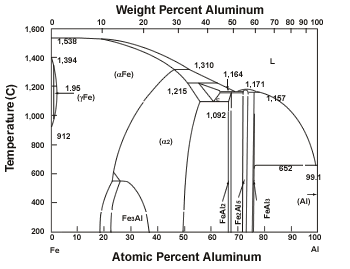
Background
Self-shielded flux-cored arc welding (SS-FCAW) wires have been used on oil&gas pipeline since last century. Back to the beginning of SS-FCAW application on pipeline welding, the alloying strategy of line pipe steel was rather straight. It adopted a solid-solution strengthening mechanism to achieve the desired mechanical properties. Carbon, manganese, silicon are the most popular alloying elements in classic line pipe materials. As a matter of fact, they are still the essential elements (other than sulfur and phosphorus) specified by API 5L today. Modern high-strength line pipe, such as X70, X80 and X100, receives much more complicated alloying strategies. For example, Nb, V, Ti, and Cu precipitation strengthening and grain refinement are used to acquire an excellent CVN impact toughness while increasing the pipe strength level. Those intrigue mechanisms directly challenge the pipeline welding consumables, especially for SS-FCAW pipe welding wires.
Metallurgy of SS-FCAW
Classic SS-FCAW wires used on pipeline were developed in 1960s. Their fundamental slag and alloying systems haven’t been changed since then. Aluminum is still the major deoxidizer and denitridizer in modern SS-FCAW wires. As a ferrite stabilizer, aluminum greatly reduces the austenite zone in steel’s phase diagram (Figure 1) and creates an austenite + δ-ferrite dual phase zone.
Figure 1 The iron and aluminum phase diagram
According to Figure 1, the aluminum solubility in iron is about 1.0 wt%, which coincides with a popular concentration of aluminum in SS-FCAW welds. Due to the compositional fluctuation in the welds caused by the weld pool movement and an aluminum segregation in a SS-FCAW wire, a local aluminum content higher than 1.0wt% is more than likely. As a result, a presence of δ-ferrite in the weld is not surprised. Since modern line pipe steels contain Nb, Cr and V, they are strong ferrite stabilizers too. The austenite zone could be further compressed to increase the probability of the δ-ferrite formation in the welds. Adding Ni into a SS-FCAW weld is considered to be able to expand the austenite zone to improve the CVN impact toughness. However, it remains to be a question if the Ni addition alone is adequate to counter-balance the negative effect from Al and elements, i.e. Nb, Cr, and V, diluted from the line pipe steel. It was found by the SS-FCAW flux formulation practice that the CVN impact toughness of a SS-FCAW weld won’t be noticeably increased after the [Ni] in weld become higher than 2.0wt%.
In addition to the alloying effect, thermal history and heat input of a SS-FCAW welding also play important roles to affect the CVN impact toughness. Both a low and high heat input can significantly reduce the impact toughness, which may be related with the δ-ferrite formation and its coarsening, secondary grain growth, residual austenite transformation to martensite, etc. In fact, only a narrow range of welding parameters in an operation window (suggested by a consumable manufacturer) could generate good CVN impact toughness from a 1G plate welding per AWS A5.29.
A toughness problem of SS-FCAW on pipe
The distribution of brittle δ-ferrite in SS-FCAW pipe welds makes the CVN impact toughness highly unpredictable. Often, it was observed that the impact toughness drops significantly from over 200 ft-lbs to 7 ft-lbs while the average toughness can pass the qualification requirement with no problem. When a CVN toughness as low as 7 ft-lbs is encountered, the Charpy sample has virtually no toughness at all. It is called as a “clink” by testing labs. Indeed, “clinks” happen way too often when commercial SS-FCAW wires are tested on line pipe. The “clink” brings about a significant spread of the CVN impact toughness of pipe welds made by a SS-FCAW pipe welding wires. Worse than that, it has even become a used drill to overlook the “clink” during welding qualifications. Until recently, the “clink” has caused a serious concern by pipeline builders.
Concerns about the conformance test on SS-FACW wires per AWS A5.29
When a conformance test is performed to qualify a pipe welding SS-FCAW wire per AWS A5.29, there is an option of using a butter layer. The butter layer on the “V”-groove surface can be welded by a SMAW electrode or the SS-FCAW wire itself to isolate the dilution from the line pipe steel. As a result, negative effect from Nb, V, and Cr on pipe weld will be screened out. By doing that, it still won’t be able to mitigate the “clink” problem from time to time. If five CVN impact samples are tested at one testing temperature, the spread of the weld metal CVN impact toughness can be usually acceptable. However, if the number of CVN testing samples is increased to 10 or more, there usually have one “clink”.
AWS A5.29 states that “in evaluating the test results, the lowest and highest values obtained shall be disregarded. Two of the remaining three values shall equal or exceed the specified 20ft.lbf [27J] energy level. One of the three may be lower, but not lower than 15 ft.lbf [20J], and the average of the three shall be not less than the required 20 ft.lbf [27J] energy level.” The statement works fine on a normal or decent spread of CVN toughness data without problem. However, if “clinks” keeps on happening at a regular basis on SS-FCAW welds, there shall be a concern on a legitimacy of the application of the statement. This is a real issue to SS-FCAW wires with different brands.
Considering a direct exposure of the arc in the atmosphere, the welding condition of SS-FCAW is much worse than that of a gas-shielding FCAW. Mechanical properties of SS-FCAW welds are very sensitive to heat input and thermal history. From the viewpoint of engineering robustness, a SS-FCAW wire ought be AWS-specified to be tested under high and low heat inputs, like “D” class wires. This is especially true for SS-FCAW wires used on pipelines.
When a circumferential welding is performed on a pipe joint, the arc travels from a down-hand position at 12 o’clock to an over-head position at 6 o’clock. For SS-FCAW pipe welding, the travel speed is carefully manipulated by a skillful pipe-welder in order to achieve a quality weld. Since the operation window of a SS-FCAW wire is much narrower than that of a gas-shielding FCAW wire, a pipe welder has to aggressively manipulate the arc at 3 and 6 o’clock positions. Consequently, the heat input changes with the progression of welding, which could sensitize the mechanical properties of the circumferential weld.
Interestingly, API 1104 does not examine the mechanical properties at 3 and 6 o’clock positions that are the most difficult positions to weld and pass mechanical property tests. If a sharp drop of CVN impact toughness happens at 6 o’clock, the integrity of the pipe weld will be strongly questionable. Due to a real possibility of a significant CVN impact toughness fluctuation with positions, the “typical” SS-FCAW CVN impact toughness stated in an AWS A5.29 conformance certificate can greatly mislead a pipeline design engineer and a welding engineer.
Concerns on SS-FACW wires technical datasheet
An operation window or a “Typical Welding Parameters” table is usually prescribed on a technical datasheet by consumable manufacturers. The window can be developed based upon the welding performance of a SS-FCAW wire instead of results of weld metal mechanical properties. In other word, using any sets of welding parameters in the window won’t necessary bring about the “typical” mechanical properties reported in the conformance certificate issued by a welding consumable company. Since mechanical properties of a SS-FCAW weld is sensitive to heat input or welding parameters, using different welding parameters in the window could result in a large difference of mechanical properties from one to another. In brief, the window doesn’t provide any guidance to a welding engineer who specifies welding parameters to pass mechanical properties qualification for his PQRs. Especially for inexperienced welding engineers, the window can be a misleading in terms of predicting mechanical properties of a SS-FCAW weld metal.
Conclusion
Considering the SS-FCAW metallurgy and the sensitivity of mechanical properties with respect to the thermal experience of a SS-FCAW pipe welding, the current AWS A5.29 does not specify pipeline welding SS-FCAW wires robust enough. A separate AWS specification on SS-FCAW wires needs to be developed to guide the welding practice of fabrication industry in a better way.

